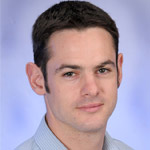by Ben Quigley
Headaches are a very common presentation that can be effectively treated by osteopathy. There are many causes of headaches, the most common being cervico-genic, i.e. referred pain from the neck.
Different structures in the neck can cause pain to be felt in the head.
Restricted, misaligned vertebrae will refer pain when the neck is moved beyond its capacity causing a strain in the vertebral joints, such as a sudden movement of the neck or typically looking over your shoulder when reversing a car. A very common problem occurs in the two highest vertebrae, which typically refers pain to the base of the skull, the temple area and behind the eyes. A “neck” headache may be a “trigger” which leads to a migraine. Many patients say that their migraine begins with neck tension, which then develops into a migraine.
The surrounding musculature can also refer pain with the formation of tight knots of contracted muscle known as ‘trigger spots’. These trigger spots are commonly found at the back and sides of the neck and where the head meets the neck and the neck meets the shoulders.
So how can these various causes be treated?
With the use of osteopathic techniques, headaches can be eradicated and with good posture, reoccurrence can be prevented.
Adjustments to the vertebrae can realign a misaligned joint restoring proper movement so the neck isn’t prone to ‘locking up’. Deep inhibition (compression to muscles) will reduce tension and ease the trigger spots.
Osteopathic manipulation and follow-up exercises are proven to reduce the incidence of cervico-genic headaches.
Headaches are seen as normal by many people who endure them daily and see painkillers as the only way to help stop the pain. With a thorough osteopathic examination to identify the root cause of the problem and the use of manipulation, headaches can be effectively treated.
At Broadgate, we have the good fortune to have a formal headache team, which is led by a Consultant Neurologist. If there is a need for a “second opinion” or additional investigations, these can be quickly arranged.
This article was written by Ben Quigley, who is one of Broadgate Spine & Joint Clinic’s registered osteopaths. To find out more about him, go to https://www.broadgatespinecentre.co.uk/london-osteopathy/.




